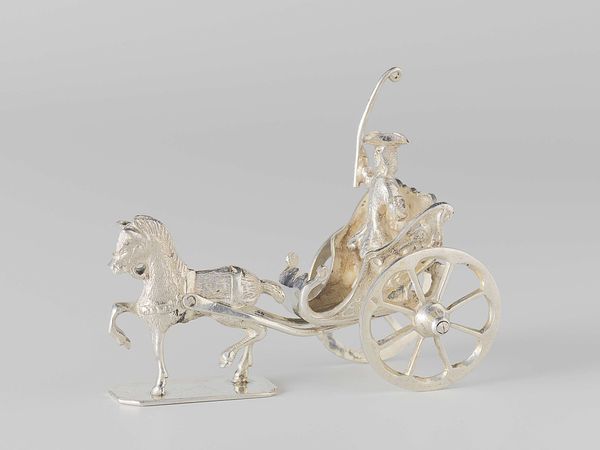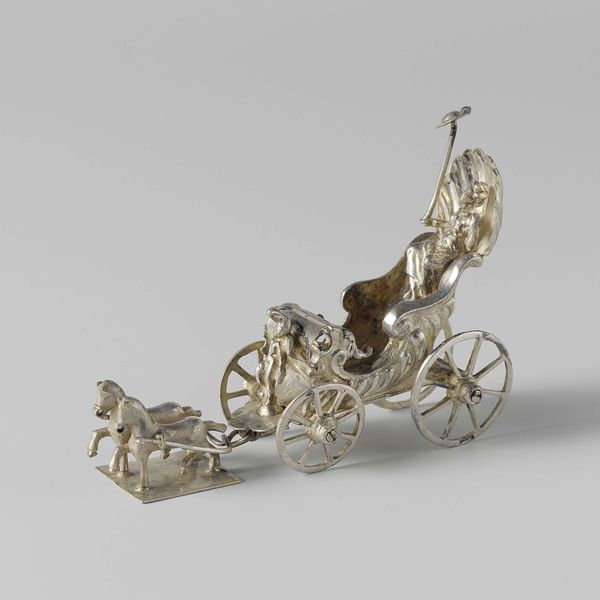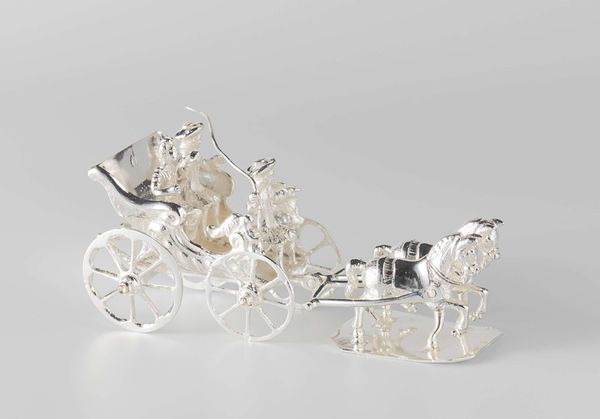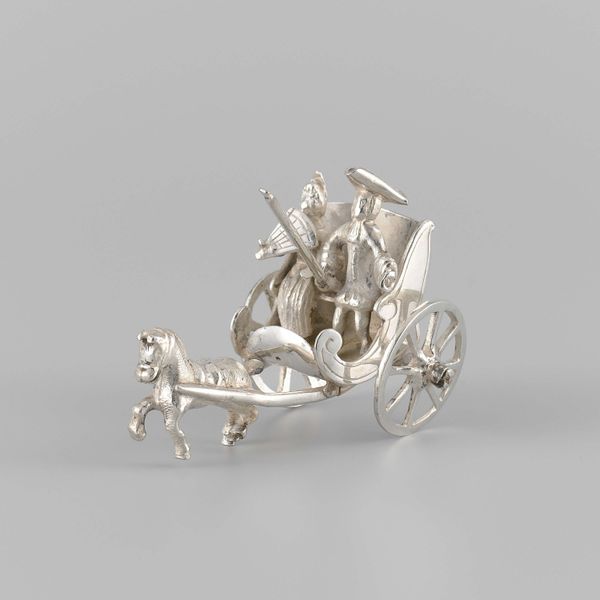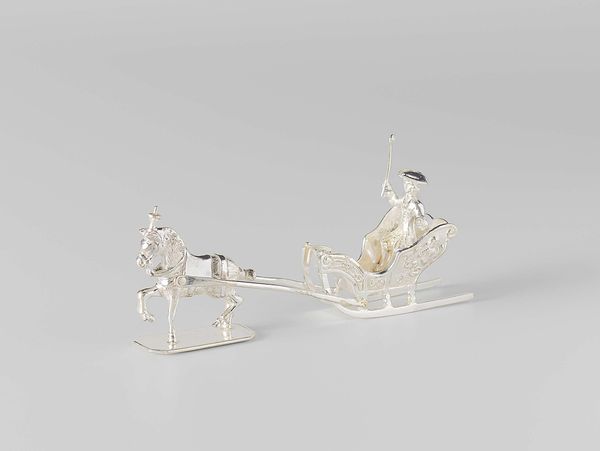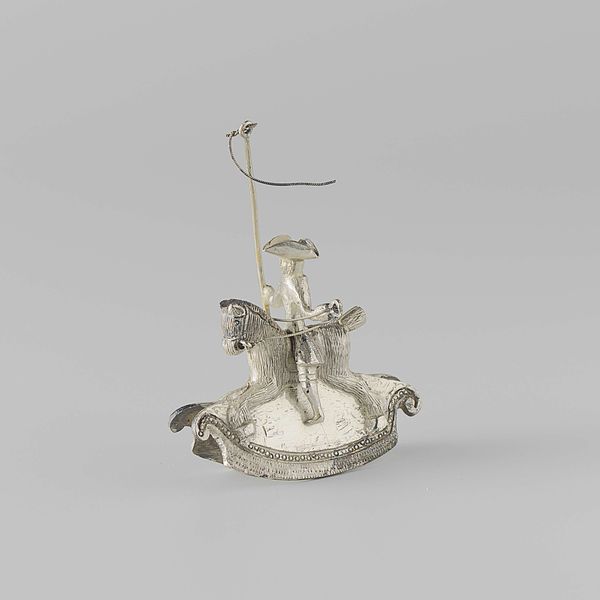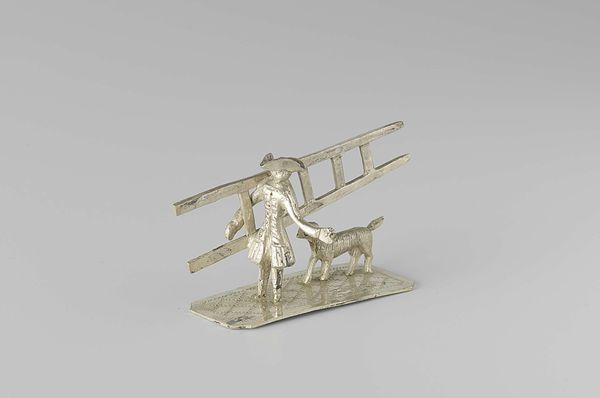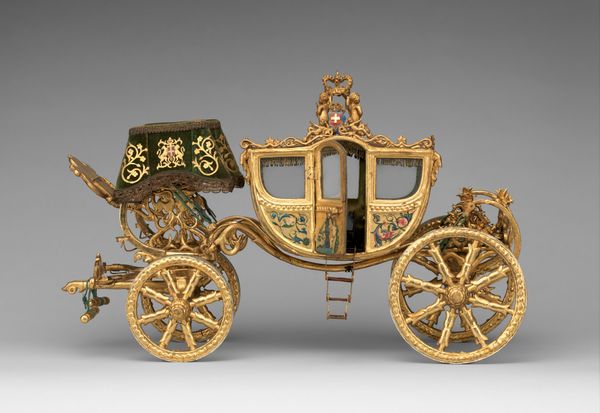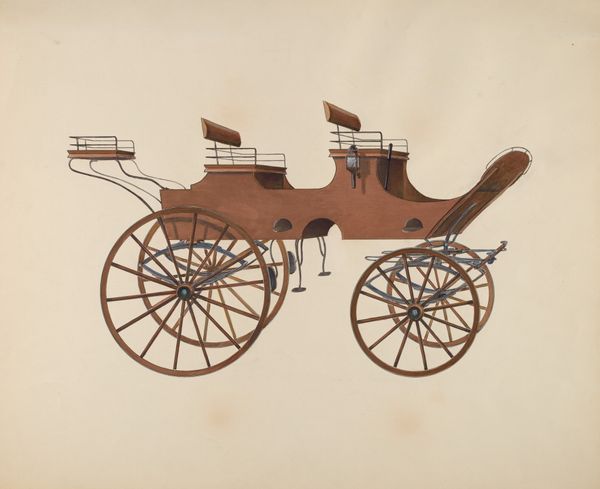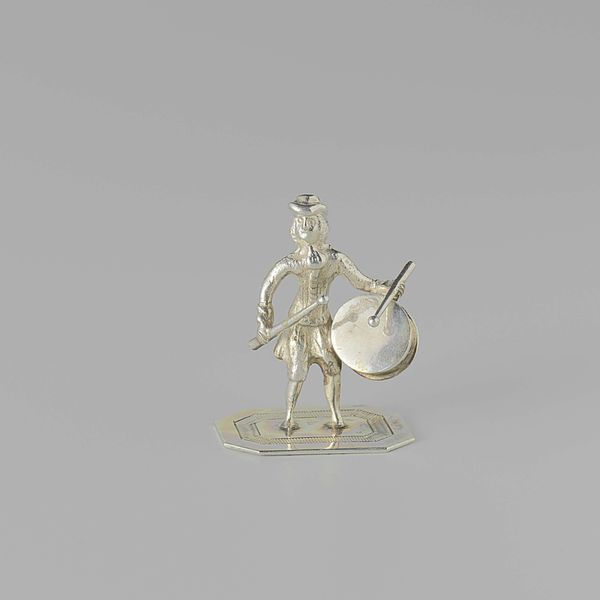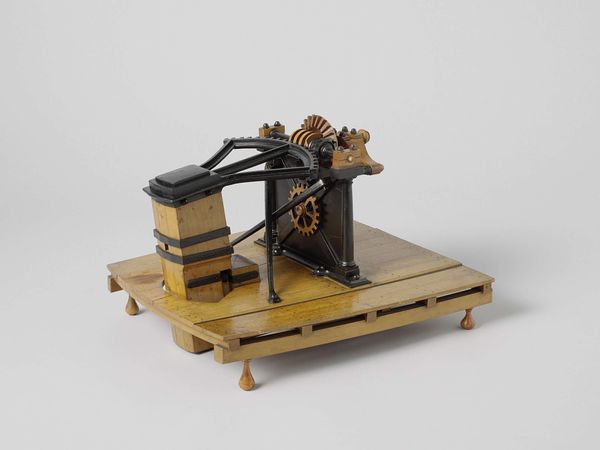
Dimensions: length 7.7 cm, width 3.4 cm, height 5.2 cm, weight 34.73 gr
Copyright: Rijks Museum: Open Domain
This is a silver 'Sjees' made by Jacobus van Tricht, a silversmith active in the 18th century. The piece is an intriguing display of miniaturization, capturing a horse-drawn carriage in remarkable detail. Notice the reflective quality of the silver; how it catches the light, accentuating the contours and forms. The composition is meticulously structured, with the horses leading the eye towards the carriage and its driver. This creates a dynamic movement frozen in time. The use of silver is not merely decorative; it's integral to the artwork's meaning. Silver, traditionally associated with wealth and status, elevates the scene, transforming a simple mode of transport into a symbol of prestige. Van Tricht's choice of silver also engages with the broader artistic and philosophical concerns of his time. During the 18th century, the Enlightenment was in full swing, emphasizing reason, order, and a fascination with the material world. The detailed craftsmanship and precious material reflect the values of the period. The structure of the composition, along with its intricate details, functions as a cultural signifier, reflecting societal values and the era's fascination with craftsmanship and status.
Comments
No comments
Be the first to comment and join the conversation on the ultimate creative platform.
